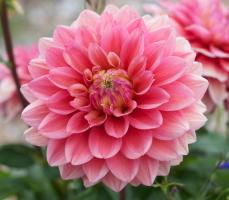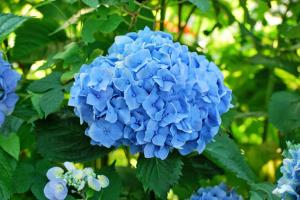How to Bring Potted Plants Indoors for Winter
Winter is a challenging time for potted plants as the cold temperature and frost can easily damage their roots and stems. Therefore, it’s important to take the necessary steps to protect them by bringing them indoors for the winter season. Here are some useful tips on how to bring potted plants indoors for winter:
1. Prepare the indoor space
The first step is to select a suitable indoor space for your potted plants. It should be a cool, well-lit area that has good air circulation. Avoid placing your plants near radiators, vents, or windows that are drafty. Once you’ve identified the perfect space, ensure that it’s free of any debris, dust, or pests that could harm your plants.
2. Trim and clean your plants
Before bringing your plants indoors, clean them properly to remove any dirt or debris that may have accumulated on the leaves and stems. Trim off any dead or damaged leaves and branches to give your potted plants a fresh start. For plants that have outgrown their pots, consider repotting them with fresh soil in a larger container that can accommodate their growth during the winter season.
3. Adjust watering and fertilizing
Indoor environments tend to be drier than outdoor spaces, so it’s important to adjust your watering schedule to ensure that your potted plants get the right amount of moisture. Avoid overwatering your plants, as this can cause root rot and other issues. Also, reduce the frequency of fertilizing your plants as they tend to enter a dormant stage during the winter months.
4. Provide adequate lighting
Most potted plants require an adequate amount of natural light to grow, so make sure you place them in a location that gets plenty of sunlight during the day. However, if your indoor space doesn’t get enough natural light, you can supplement it with artificial lighting such as fluorescent or LED bulbs. Be sure to keep the light source at an appropriate distance from your plants to avoid burning the leaves.
5. Monitor temperature and humidity
During the winter season, temperatures can fluctuate rapidly, which can negatively impact your potted plants. Ensure that your indoor space is kept at a constant temperature that is suitable for your plants, usually between 60-75 degrees Fahrenheit. Additionally, maintain adequate humidity levels by misting your plants regularly or placing a bowl of water nearby to increase the moisture in the air.
6. Watch out for pests
Pest infestations can occur in indoor spaces, especially during the winter months when plants are confined to a limited space. Look out for common pests such as spider mites, whiteflies, and aphids, which can cause significant damage to your plants. If you notice any signs of pest infestation, treat your plants with an appropriate insecticide or fungicide to prevent further damage.
In conclusion, bringing potted plants indoors for the winter season requires careful planning and attention to detail. By following these tips, you can ensure that your plants stay healthy and strong throughout the winter months and emerge blooming in the springtime.

 how many times do yo...
how many times do yo... how many planted tre...
how many planted tre... how many pine trees ...
how many pine trees ... how many pecan trees...
how many pecan trees... how many plants comp...
how many plants comp... how many plants can ...
how many plants can ... how many plants and ...
how many plants and ... how many pepper plan...
how many pepper plan...






























